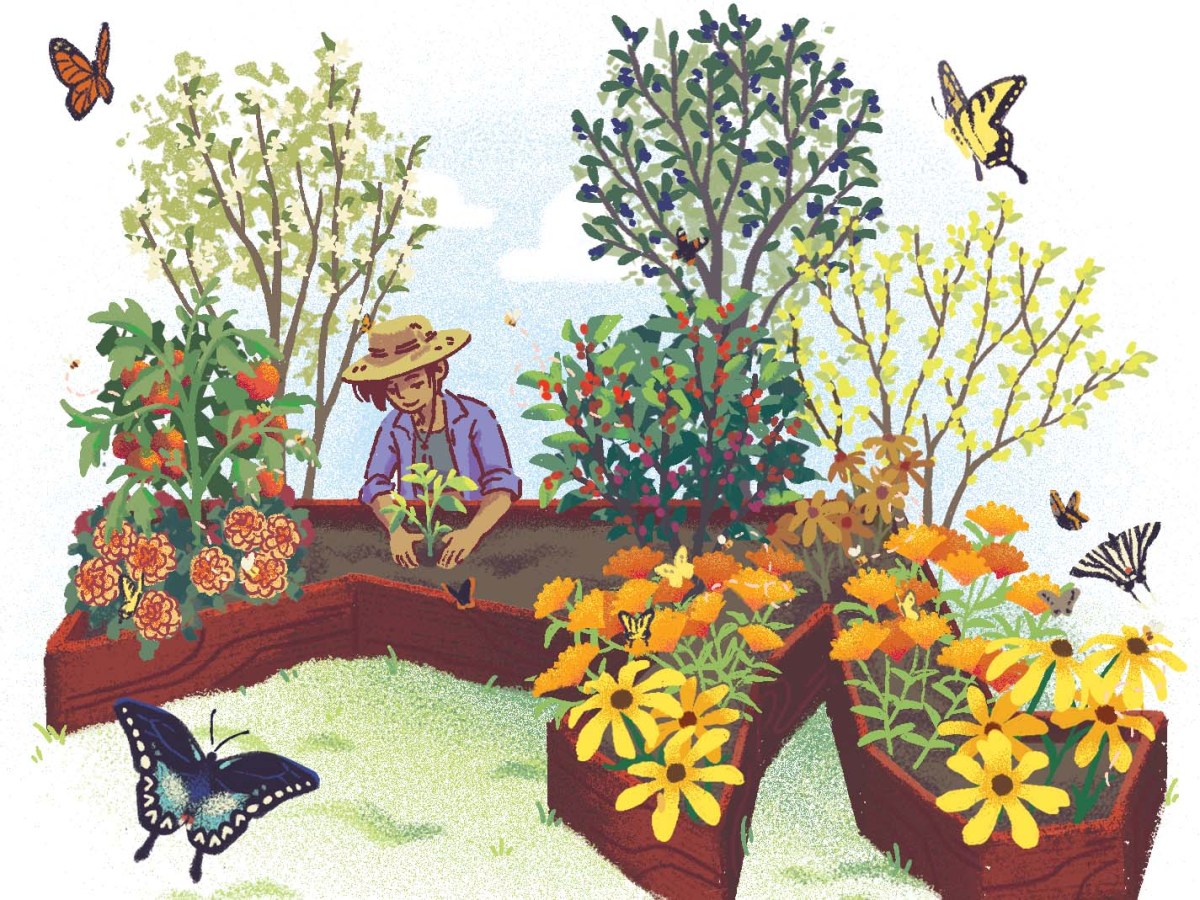Do prep work.
Now is the time to clean and sharpen garden tools, including shears, pruners and shovels. If you need new equipment, Vanessa Pierre, a garden coach and educator with Homestead Hustle & Healing in Silver Spring, recommends taking advantage of lower off-season pricing. Check any deer netting or enclosures to see if they require repairs. “And you can never, ever go wrong with adding at least an inch to 2 inches of compost on your garden beds every year,” Pierre says.
Pick your plants.
When deciding what to grow, Pierre suggests first thinking about why you’re gardening. Are you hoping to inspire healthier eating habits? Would you like a steady supply of freshly cut flowers to display? Do you want to replace or supplement cooking staples? Let your reasoning guide your planting, because you don’t want to produce an abundance that will just end up in the compost pile or the yard-trimmings bin.
Plan your plot properly.
The Square Foot Gardening Method is an easy-peasy approach for newbies. Divide your bed into 12-inch by 12-inch squares. Each will be filled with one, two, four, nine or 16 plants, depending on the size and spread of what you’re growing. For example, in a single square you can grow one tomato plant, two kale plants, four bok choy plants, nine leeks or 16 carrots. Check out squarefootgardening.org to learn how many plants fit in a square.
Plant at the right times.
MoCo is mostly in growing zone 7b with parts of the north and west in 7a, so by mid-March you can begin planting seedlings of cold-hardy annual flowers, such as pansies, primroses and ranunculus, as well as such cool-weather vegetables as hearty greens, broccoli and cauliflower. In March and April, put in shrubs or trees. Summer crops go in last. “The rule of thumb is Mother’s Day” which is on May 12 this year, says Dave Johannes, owner of Good Earth Garden Market in Potomac, who warns to keep an eye out for late-season frosts that can damage or destroy young plants.
Let’s talk tomatoes.
Tomatoes are one of the most popular plantings, but also one of the most misunderstood and mishandled. Unlike most seedlings, they need to be planted deep, with roughly two-thirds of the stalk underground. Make sure to fill the hole with fertilizer to give it a boost, then add additional fertilizer every six to eight weeks. If aphids often decimate your tomatoes, plant marigolds nearby. “They will volunteer as tributes,” Pierre says. “The aphids will eat this trap crop and leave your tomatoes alone.”
Focus on native species.
When it comes to upgrading your landscaping, opt for native species, which are most beneficial to local flora and fauna. The University of Maryland Extension maintains a list of recommendations (extension.umd.edu), which can be purchased at local nurseries and garden centers—including Good Earth Garden Market, Pablo’s Garden Center in Rockville, Wildflower in Bethesda, and J R Wright & Sons in Silver Spring. Good options include flowers such as black-eyed Susans and butterfly weed, shrubs such as spicebush and winterberry holly, and serviceberry and black gum trees.
Check out a Free Little Plant Stand.
Like a Little Free Library, but for plants, these take one, “leaf one” initiatives can be good spots to score gratis seedlings and seeds to kick-start your gardening projects. Locations dot the county; find one at freelittleplantstand.com/ locations.
This story appears in the March/April issue of Bethesda Magazine.



